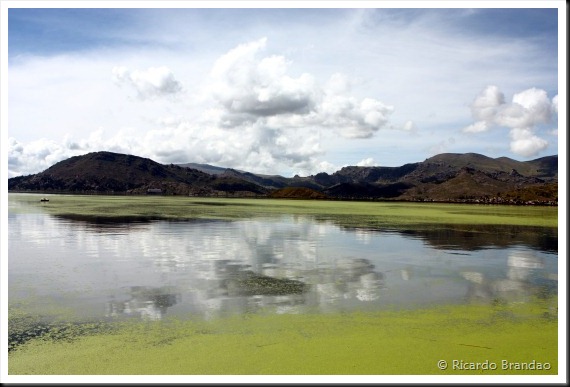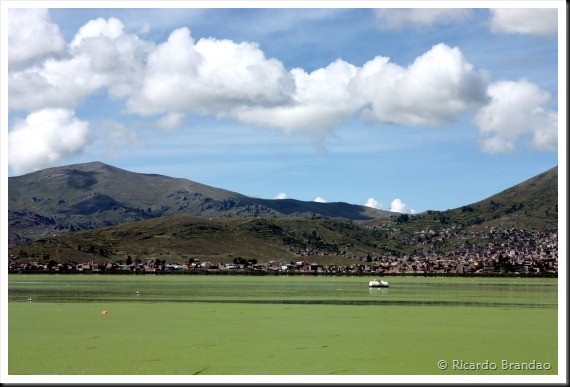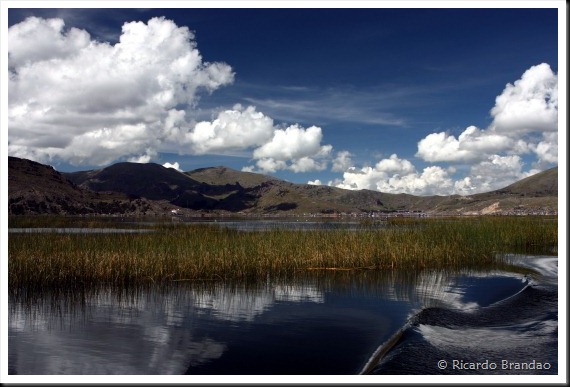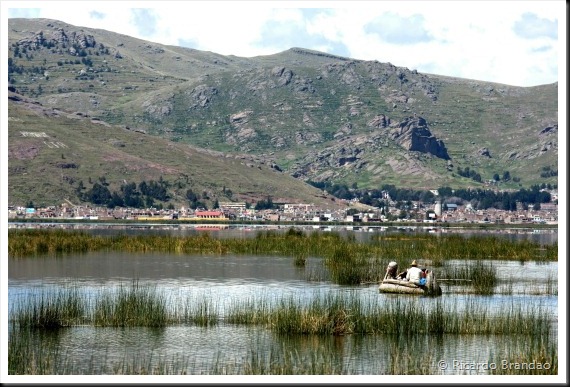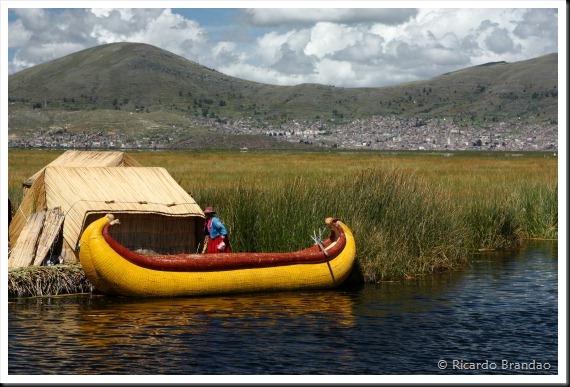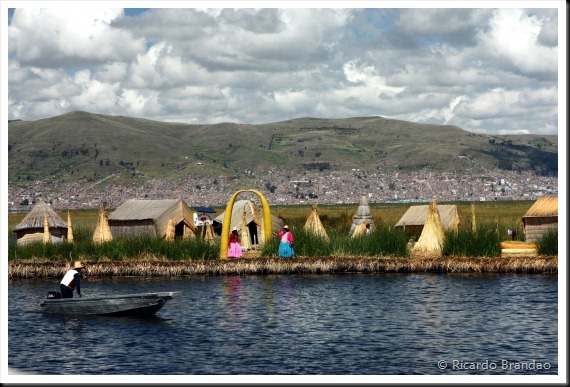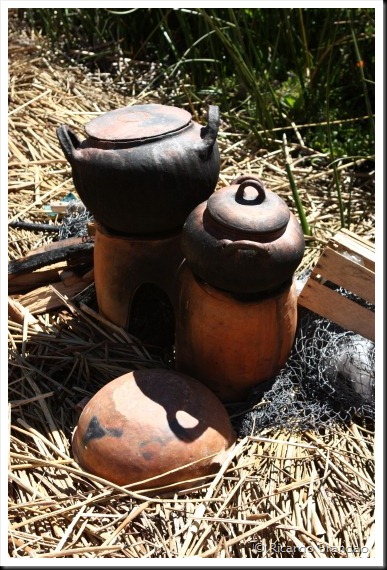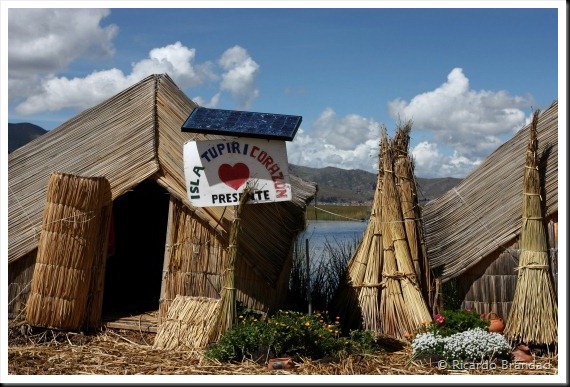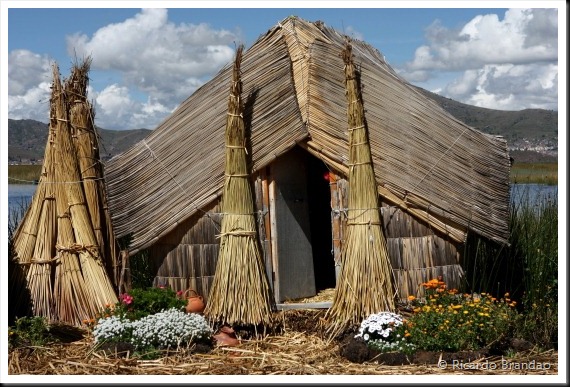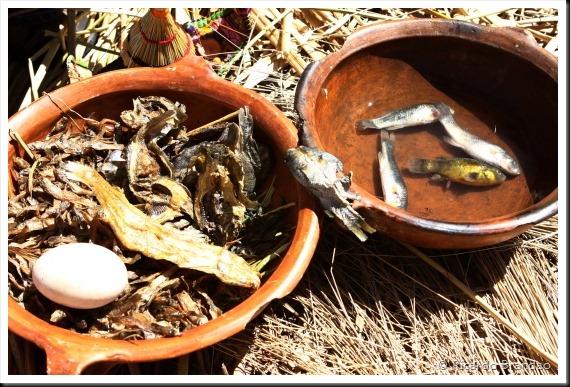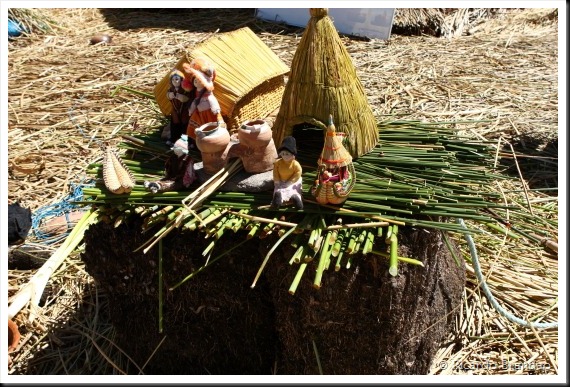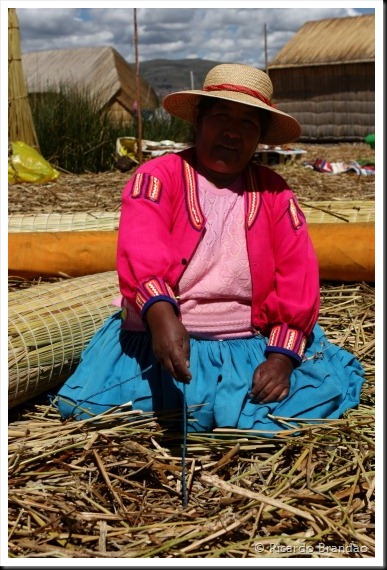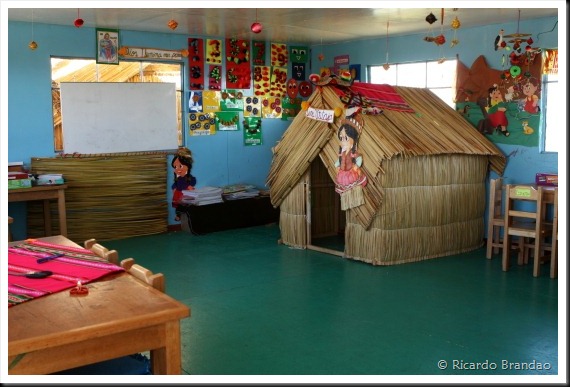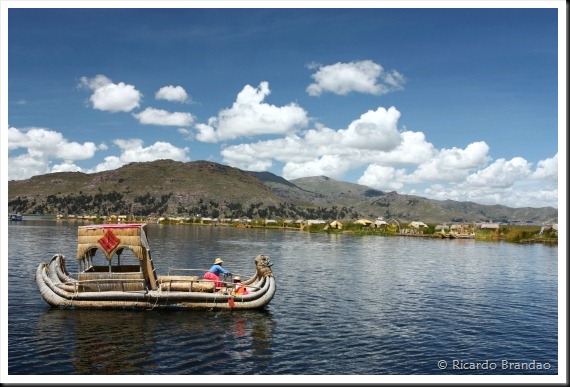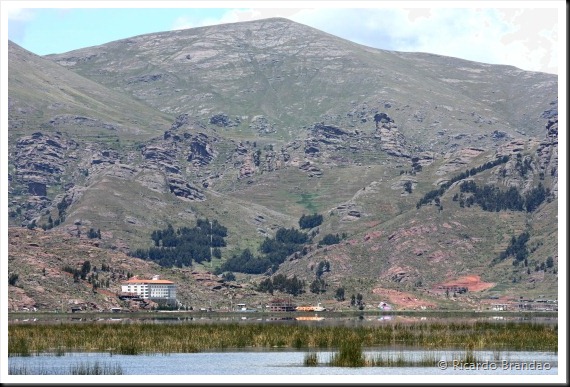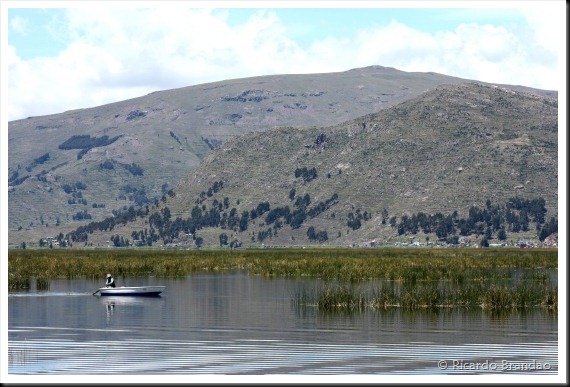O dia seguinte foi o dia dos passeios. Iniciando pela mágica visita ao lago Titicaca e o contato com os Uros, comunidade que vive nas Ilhas Flutuantes do lago.
O lago Titicaca tem uma área total de 8.560 km² e percorre uma extensão até a Bolívia. Esse lago fica cerca de 3.810 m de altitude e é considerado o mais alto lago navegavel do mundo. O nome Titicaca vem da percepção dos habitantes locais sobre o seu formato, que segundo eles mostra um puma comendo um coelho. Daí Titicaca significa puma de pedra (Titi = gato ou puma / kaka = pedra).
Nesse lago os Uros constroem suas famosas ilhas. As ilhas são artificialmente construídas sobre as águas do lago através da utilização das raízes e palhas de uma planta chamada Totora. Faz-se necessário um constante trabalho de manutenção para assegurar a flutuabilidade de tais ilhotas (a cada 25 dias uma nova camada de palha deve ser colocada na ilha) onde os residentes pescam, caçam pássaros, plantam e por último exploram o turismo com a venda de artesanato.
Da Totora eles retiram mais do as raizes e a palha para fazer a ilha. No caule dessa planta ha uma parte branca, chamada Chullio, que serve de alimento e tem um gosto semelhante a cana de açucar e a flor da Totora, Chumi, serve de remédio para problemas estomacais.
Há, digamos dois grupos de moradores nas ilhas: aqueles que se socializam com os turistas e vivem inclusive da venda de artesanatos. E, por outro lado, há os reclusos que apenas interagem entre eles mesmos.
Na pequena ilha que visitei moram 25 pessoas, sem dúvida, muita gente para um espaço tão pequeno. E eles tem um método interessante de “ajuste de divergências”, digamos assim. Se houver alguma discórdia na ilha, o “juiz” da ilha é o serrote com o qual eles dividem a ilha e separam os causadores do problema.
E também fiz um passeio pelo lago em uma barca típica dos Uros.
Resumindo tudo isso, uma experiência incrível.
___________________________________________________________________________
The next day was the the day of the tours in Puno. And it started by the magical visit to Titicaca lake and the contact with Uros, a community who lives on Floating island.
Titicaca lake has an total area of 8,560 km² and its length reaches Bolivia. This lake is 3,810 m of altitude above sea level and it´s considered the highest navigable lake in the world. The name Titicaca comes from the perception of the inhabitants about its format, it means, according to them it seems to be a cougar (puma) eating a rabbit. So, Titicaca means stone cougar (Titi = cat or cougar kaka = stone).
In this lake the Uros build their own famous islands. The islands are artificially built using the roots and straw of a plant called Totora. It requires a constant work of maintenance to assure the island to float (every 25 days a new layer of straw must be placed on the island) as it is where they live, they fish, they plant and they explore tourism through allowing the visits and selling handicrafts.
From Totora they use more than the root and straw. There is a white part of the stalk, called Chuillio, which they eat and it taste is like sugar cane. They also use its flower, called Chumi, as medicine for stomachache.
I may say there are two different groups of island´s inhabitants: those who socialise with tourists and those who live recluse.
In the small island I visited live 25 people, no doubt it´s too much people for a small space. By the way they have an interesting way to solve conflicts among them. If there is a discord in the island the “judge” is a saw to cut the island and leave each one a part of the island.
Summarising, it was an amazing experience.
As algas no lago Titicaca / Titicaca lake and seaweed
A Totora
chegando na ilha / arriving in the island
como a ilha é feita / how they make the island
a mama da ilha / the mama of the island
a escola / the school
Copyright © Ricardo Brandao.
All Rights Reserved / Todos os Direitos Reservados.
Se interessou por alguma foto? Entre em contato.
Contact: ricardobrandaofotografia@gmail.com
